|
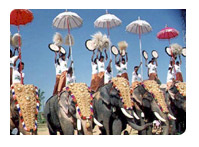 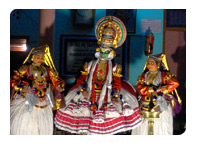
DAY 01 : Arrive Delhi
 Arrive Delhi and transfer to the Hotel. check in the Hotel. Arrive Delhi and transfer to the Hotel. check in the Hotel.
Later take a city tour of Delhi - the Capital of India consists of two distinguishable parts: Old Delhi, with its typically oriental city quarters, narrow alleys and bazaars, its temples, mosques and other historical monuments, and New Delhi, laid out symmetrically as a garden city by the British with wide stately streets, un- spoilt gardens, widely scattered colonial-style summer houses and shady valleys.
Take a combined tour of Old & New Delhi :- The older part of the Capital takes you to the Red Fort with its Pearl Mosque and exquisite audience halls, Jama Masjid Mosque with its marble domes and slender minarets; Raj Ghat (where Mahatma Gandhi was cremated). The modern area takes you on a drive along Rajpath, New Delhi's broadest avenue, and see the House of Parliament, the Diplomatic Enclave and the President's House – the royal residence of the former viceroys and now of the President of India.Visit the India Gate & The Qutub Minar built in the 12th century.Return back to the Hotel.Overnight at the Hotel
Day 02 : Delhi 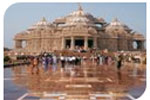 After breakfast, visit the Akshardham temple - Akshardham means the eternal, divine abode of the supreme God, the abode of eternal values and virtues of Akshar as defined in the Vedas and Upanishads where divine bhakti, purity and peace forever pervades. For the first time ever in the world witness the heritage of India in all its facets, insights and beauty at the Swaminarayan Akshardham through its mandir, exhibitions, verdant gardens and other attractions After breakfast, visit the Akshardham temple - Akshardham means the eternal, divine abode of the supreme God, the abode of eternal values and virtues of Akshar as defined in the Vedas and Upanishads where divine bhakti, purity and peace forever pervades. For the first time ever in the world witness the heritage of India in all its facets, insights and beauty at the Swaminarayan Akshardham through its mandir, exhibitions, verdant gardens and other attractions
Return back to the Hotel.Overnight at the Hotel..
Day 03 :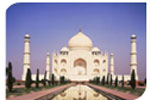 Delhi - Agra (210kms - 4.5hrs)After breakfast, check out from the Hotel and drive to Mughal city Agra. Enroute visit Mathura- the land where Shri Krishna was born and spent his youth, has today little towns and hamlets that are still alive with the Krishna legend and still redolent with the music of his flute. Mathura, a little town on the River Yamuna was transformed into a place of faith after Lord Krishna was born here. Vrindavan, a village - once noted for its fragrant groves, is where he spent an eventful youth. There are numerous other little spots in the area that still reverberate with the enchantment of Shri Krishna. Delhi - Agra (210kms - 4.5hrs)After breakfast, check out from the Hotel and drive to Mughal city Agra. Enroute visit Mathura- the land where Shri Krishna was born and spent his youth, has today little towns and hamlets that are still alive with the Krishna legend and still redolent with the music of his flute. Mathura, a little town on the River Yamuna was transformed into a place of faith after Lord Krishna was born here. Vrindavan, a village - once noted for its fragrant groves, is where he spent an eventful youth. There are numerous other little spots in the area that still reverberate with the enchantment of Shri Krishna.
Proceed to Agra. Arrive and check in at the Hotel. Evening is free at leisure for personal activities.Return Back to the Hotel. Overnight at the Hotel.
Day 04 - 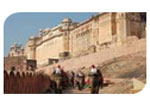 Agra Enjoy Sunrise at the Seven Wonders of the World - the Taj Mahal. Enjoy the sunset at Taj Mahal. Agra Enjoy Sunrise at the Seven Wonders of the World - the Taj Mahal. Enjoy the sunset at Taj Mahal.
Taj Mahal stands on the bank of River Yamuna, which otherwise serves as a wide moat defending the Great Red Fort of Agra, the centre of the Mughal empire until they moved their capital to Delhi in 1637. It was built by the fifth Mughal emperor, Shah Jahan in 1631 in the memory of his second wife, Mumtaz Mahal, a Muslim Persian princess. She died while accompanying her husband in Behrampur in a campaign to crush a rebellion, after giving birth to their 14th child. Her death so crushed the emperor that all his hair and beard were said to have grown snow white in a few months.
When Mumtaz Mahal was still alive, she extracted four promises from the emperor: first, that he build the Taj; second, that he should marry again; third, that he be kind to their children; and fourth, that he visit the tomb on her death anniversary. He kept the first and second promises. Construction began in 1631 and was completed in 22 years. Twenty thousand people were deployed to work on it. It was designed by the Iranian architect Istad Usa and it is best appreciated when the architecture and its adornments are linked to the passion that inspired it. It is a "symbol of eternal love"
Later visit the Agra Fort :- It has a history that spans two generations of the Mughal emperors. Started during the reign of the Mughal emperor Akbar (1556-1605), the construction work on the Agra Fort continued till the reign of his grand son Shah Jahan (1627-58). Though started by Akbar in 1565, it was Shah Jahan, who constructed most of the buildings inside the fort.
Situated on the bank of river Yamuna, the Agra Fort today, stands as a citadel of the past that has witnessed centuries slip by. Built in red stone, the Agra fort stretches almost two kilometres on the bank of the Yamuna. A huge wall that stands 69 ft in height encircles the crescent shaped fort. With only two main gates built to enter the fort, the impregnable stature of the fort becomes amply clear. The two gates are named the Delhi gate and the Amar Singh Gate.Return back to the Hotel.Overnight at the Hotel.
DAY 05 :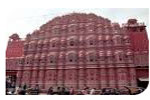 Agra - Jaipur (260kms - 5.5hrs) Agra - Jaipur (260kms - 5.5hrs)
After breakfast, check out from the Hotel and drive to Jaipur.
Enroute visit the Fatehpur Sikri - the deserted red sandstone city built by Akbar the Great to commemorate the birth of his son. The building of this capital was substantially completed in 1574 but 14 years later the city was abandoned, perhaps at the whim of an Imperial favorite, and the immense labor of building the "City of Victory" went for nothing. Visit the red stone mosques, courtyards and the palace where Akbar once played chess using slave girls as pawns.
Proceed to Jaipur.On arrival check in to your hotel.Rest.Overnight at hotel.
Day 06: 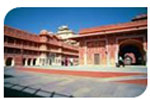 Jaipur After breakfast, visit the Amber fort, built in 16th century, enjoy an elephant ride at Amber. Amber Fort also known as Amer Fort is located in Amber, 11 km from Jaipur, Rajasthan state. It was the ancient citadel of the ruling Kachhawa clan of Amber, before the capitalt was shifted to present day Jaipur. Amber Fort is known for its unique artistic style, blending both Hindu and Muslim elements, and its ornate and breathtaking artistic mastery. The fort borders the Maota Lake, and is a major tourist attraction in Rajasthan. Jaipur After breakfast, visit the Amber fort, built in 16th century, enjoy an elephant ride at Amber. Amber Fort also known as Amer Fort is located in Amber, 11 km from Jaipur, Rajasthan state. It was the ancient citadel of the ruling Kachhawa clan of Amber, before the capitalt was shifted to present day Jaipur. Amber Fort is known for its unique artistic style, blending both Hindu and Muslim elements, and its ornate and breathtaking artistic mastery. The fort borders the Maota Lake, and is a major tourist attraction in Rajasthan.
Later take a city tour of Jaipur :- Hawa Mahal (Wind Palace), is a pyramid-shaped facade with five stories. It has 953 small windows decorated with tiny lattice work. These pink sandstone windows commonly known as "Jharokhas" are constructed in such a style, that it looks like a giant honeycomb. The air circulation through windows represents the marvelous touch of Mughal designing, which keeps the Palace always cool. The small screened balconies and arched roofs with hanging cornices enhance the beauty of the Palace. The Pyramidal outline and replication of pattern makes it more attractive in appearance.
City Palace is the residence of the former ruling family of Jaipur. It occupies the centre of the city, covering one-seventh of its area and surrounded by a high wall - the Sarahad. The architecture combines elements of Rajput beauty with Mughal spaciousness and English linear planning. The Jaipur royal family resides in what is known as the Peacock Courtyard, although this is no longer open to the public.
Jantar Mantar an astronomical observatory. Literally "instruments for measuring the harmony of the heavens", the Jantar Mantar Observatory was built between 1728-1734. Not content with brass, Jai Singh II wanted things on a grand scale and chose stone with a marble facing on the important planes. Each of the instruments serves a particular function and each gives an accurate reading. It is said that Indian kings viewed themselves as "Universal Emperors wielding the wheel", an emblem that represented the universe. This meant that the correct time had to be fixed for each event. Astrologers were hired to regulate actions within the palace and, by extenuation, within the entire kingdom. Astronomy was closely related to astrology, which is why Jai Singh II constructed the Observatory inside his palace.
Evening enjoy shopping at the local bazaars of Jaipur. Return back to the Hotel. Overnight at the hotel.
Day 07: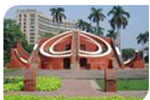 Jaipur - Delhi Depart [260kms - 5.5hrs] Jaipur - Delhi Depart [260kms - 5.5hrs]
After breakfast, check out from the Hotel and drive back to Delhi.Arrive Delhi and transfer to Delhi Airport for your onward flight with fond memories of the trip.
Tour Ends ...
Day 08 : (3 Nights / 04 Days)
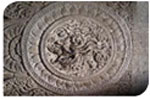 Located near the city of Aurangabad in Maharashtra, the famous Ajanta and Ellora are Cave Shrines cut out of rock, by hand and rank amongst some of the most outstanding specimens of ancient India architectural heritage. The 34 caves at Ellora and the 29 caves at Ajanta, were remained shrouded in obscurity for over a millennium, till John Smith, a British Army Officer, accidentally stumbled upon them while on a hunting expedition in 1819. Located near the city of Aurangabad in Maharashtra, the famous Ajanta and Ellora are Cave Shrines cut out of rock, by hand and rank amongst some of the most outstanding specimens of ancient India architectural heritage. The 34 caves at Ellora and the 29 caves at Ajanta, were remained shrouded in obscurity for over a millennium, till John Smith, a British Army Officer, accidentally stumbled upon them while on a hunting expedition in 1819.
Ajanta has been designated as a World Heritage Site, to be preserves as an artistic legacy that will come to inspire and enrich the lives of generations to come.
Itinerary.
DAY 09 : Arrive at Aurangabad (airport / railway station)
Pick Up from Airport / Railway Station and transfer to hotel. Rest of the day at leisure or optional tour to Paithan (Mini Vrindavan) at extra cost. Over night stay at hotel.
Day 10 :  Aurangabad. After breakfast, proceed for full day sight seeing of Ajanta Caves. Over night stay at hotel. Aurangabad. After breakfast, proceed for full day sight seeing of Ajanta Caves. Over night stay at hotel.
Day 11 : Aurangabad After breakfast, excusion tour of City, Daulatabad Fort & Ellora Caves. Over night stay at hotel.
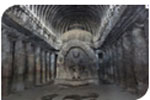 Day 12 : Aurangabad Drop. Day 12 : Aurangabad Drop.
After breakfast, check out from hotel and drive towards Aurangabad Airport / Railway Station for onward journey towards native place.
Package Includes:-
All accomodation on twin sharing basis.
Breakfast at all hotels.
All transfers and sight seeing by Non AC Indica.
All toll, parking, driver bata, fuel cost.
|